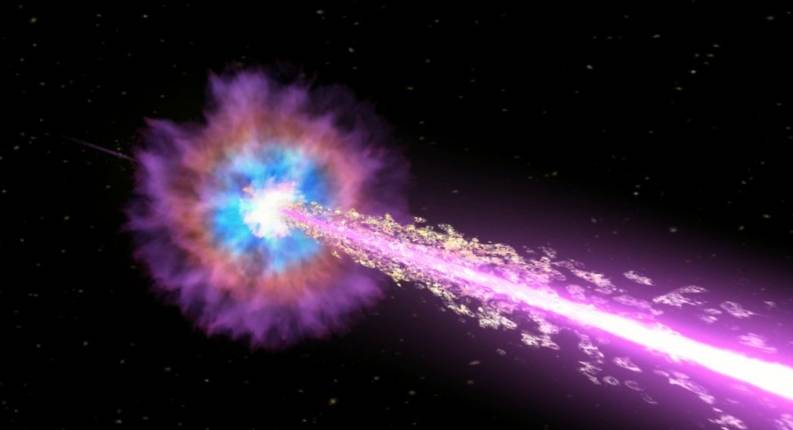This flare, dubbed GRB 221009A, provided an unexpectedly exciting start to the 10th Fermi Symposium, a gathering of gamma-ray astronomers in Johannesburg, South Africa. “It’s safe to say that this meeting really started with an explosion – everyone’s talking about it,” said Judy Rakusin, Fermi Project Associate Science Officer at NASA’s Goddard Space Flight Center.
On October 9, 2022, a wave of X-ray and gamma radiation passed through the solar system, which triggered detectors aboard the Fermi Gamma-ray Space Telescope and other orbiting telescopes, NASA says. Subsequently, ground-based observatories also set their sights on the scene.
The gamma-ray burst occurred at a distance of about 2.4 billion light years in the direction of the constellation Arrow, NOIRLab says.
Astronomers believe the signal is the birthing cry of a new black hole that has formed in the heart of a massive star that is collapsing under its own weight. Under such circumstances, the nascent black hole pushes out powerful jets (jets) of particles that move at a speed close to the speed of light. These jets pierce through the star, emitting X-rays and gamma rays as they rush into space.
“Extremely long GRB 221009A is the brightest GRB ever recorded, and its afterglow breaks all records at all wavelengths,” said Gemini South Observatory graduate student Brendan O’Connor (University of Maryland/George University Washington).
“Because this flare is so bright and so close, we believe this is a once-in-a-century opportunity to solve some of the most fundamental questions about these explosions, from the formation of black holes to tests of dark matter models,” he added. O’Connor.
This event, due to its relative proximity to Earth, is also a unique opportunity to better understand the origin of elements heavier than iron.
Scientists are also wondering how the very high energy 18 TeV (tera electron volt) photons observed by China’s LHAASO observatory in this flare were able to surpass our standard understanding of physics and survive their 2.4 billion years of travel to Earth. For comparison, the most powerful collision to date at the Large Hadron Collider at CERN had an energy of only 13 TeV.
Gamma-ray bursts (GRBs) are the most powerful class of explosions in the universe, observed in distant galaxies in the gamma-ray range, the hardest part of the electromagnetic spectrum.

